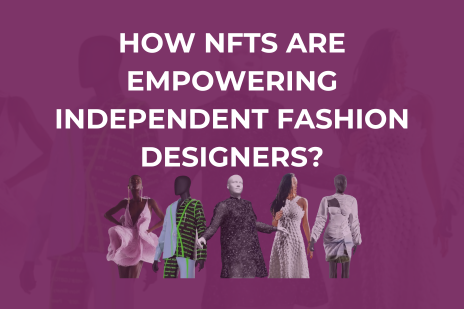
 NFTs, however, provide a platform for designers to showcase their work to a worldwide audience without the need for physical presence.
Take, for example, the case of digital fashion designer The Fabricant, who sold a virtual dress for $9,500 in 2019. This sale highlighted the potential of digital fashion and NFTs, demonstrating how designers could monetize their creations in a digital space. By leveraging NFT platforms such as OpenSea, Rarible, and Foundation, independent designers can sell their fashion items directly to consumers, bypassing traditional retail channels and retaining a higher percentage of their earnings.
In addition to direct sales, NFTs also offer the opportunity for designers to earn royalties on secondary sales. This means that whenever an NFT is resold, the original creator receives a percentage of the sale price. This model ensures that designers continue to benefit from the increasing value of their creations over time, providing a sustainable income stream.
Creating exclusive collections is another way that independent designers can leverage NFTs. Limited edition digital fashion items can create a sense of scarcity and exclusivity, driving demand and increasing the value of the designs. Collaborations and partnerships with other artists, designers, or even brands can further enhance the appeal of these collections, attracting a broader audience and fostering a sense of community.
NFTs, however, provide a platform for designers to showcase their work to a worldwide audience without the need for physical presence.
Take, for example, the case of digital fashion designer The Fabricant, who sold a virtual dress for $9,500 in 2019. This sale highlighted the potential of digital fashion and NFTs, demonstrating how designers could monetize their creations in a digital space. By leveraging NFT platforms such as OpenSea, Rarible, and Foundation, independent designers can sell their fashion items directly to consumers, bypassing traditional retail channels and retaining a higher percentage of their earnings.
In addition to direct sales, NFTs also offer the opportunity for designers to earn royalties on secondary sales. This means that whenever an NFT is resold, the original creator receives a percentage of the sale price. This model ensures that designers continue to benefit from the increasing value of their creations over time, providing a sustainable income stream.
Creating exclusive collections is another way that independent designers can leverage NFTs. Limited edition digital fashion items can create a sense of scarcity and exclusivity, driving demand and increasing the value of the designs. Collaborations and partnerships with other artists, designers, or even brands can further enhance the appeal of these collections, attracting a broader audience and fostering a sense of community.
Embrace the power of AI-powered SEO and stay ahead of the competition. Start by exploring cutting-edge tools like Surfer SEO, Frase, or SEMrush to optimize your content, target the right keywords, and drive more traffic to your website
Let’s build your idea together and serve society.
Build a Transparent, Scalable Carbon Credit Marketplace with Blockchain.